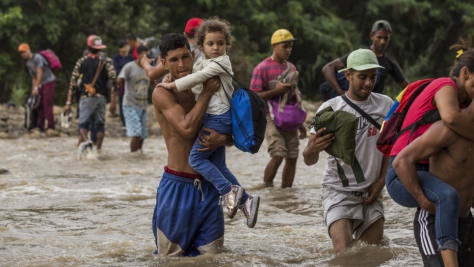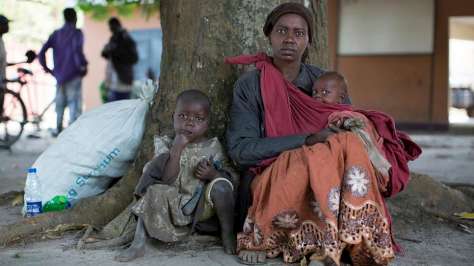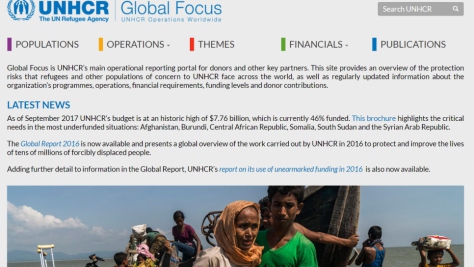Figures at a Glance
_FiguresAtAGlance_Infographic(19JUN2019).png)
We are now witnessing the highest levels of displacement on record.
An unprecedented 70.8 million people around the world have been forced from home. Among them are nearly 25.9 million refugees, over half of whom are under the age of 18.
There are also millions of stateless people who have been denied a nationality and access to basic rights such as education, healthcare, employment and freedom of movement.
In a world where nearly 1 person is forcibly displaced every two seconds as a result of conflict or persecution, our work at UNHCR is more important than ever before.
How we gather our data
Full-time statisticians in UNHCR's Field Information and Coordination Section track the number of people forced to flee so that when a major displacement crisis erupts, we are able to predict how many people need help, how much help they need and how many staff we must deploy.
These figures are released every year in our Global Trends and Global Appeal reports.
Personnel figures
Our workforce is the backbone of UNHCR. As of 31 May 2019, we employ 16,803 people, of whom around nearly 90 per cent are based in the field.
We work in 134 countries, with personnel based in a mixture of regional and branch offices and sub and field offices. Our teams work hard to help the displaced, specializing in a wide range of disciplines, including legal protection, administration, community services, public affairs and health.
Financial figures
We are funded almost entirely by voluntary contributions, with 86 per cent from governments and the European Union. Three per cent comes from other inter-governmental organizations and pooled funding mechanisms, while a further 10 per cent is from the private sector, including foundations, corporations and the public. Additionally, we receive a limited subsidy (one per cent) from the UN budget for administrative costs, and accept in-kind contributions, including items such as tents, medicines and trucks.
UNHCR was launched on a shoestring annual budget of US$300,000 in 1950. But as our work and size have grown, so too have the costs. Our annual budget rose to more than US$1 billion in the early 1990s and reached a new annual high of US$8.6 billion in 2019. For up to date information about UNHCR’s financial needs visit our Global Focus website.
Our yearly budget includes programmes that support continuing operations and supplementary programmes to cover emergencies, such as the Syria crisis or large-scale repatriation operations.
Statistics and operational data
Our accurate, relevant and timely data and statistics are crucial to refugee operations. This key resource is used by all partners to respond to the needs of refugee populations.
UNHCR's Statistics Database provides data, reports and other information essential for field operations. It also carries statistical reports on people of concern – refugees, asylum seekers, returned refugees, the internally displaced and stateless people. Detailed information on country of asylum, place of origin, gender, age, location and legal status of refugees is available. Indicators on the quality of refugee protection and UNHCR operations are increasingly being collected.
For more information, please see our Statistical Yearbooks, mid-year trends and asylum trends.
More figures and data sources
Global Trends
The Global Trends Report is published every year to analyze the changes in UNHCR's populations of concern and to deepen public understanding of ongoing crises

UNHCR Asylum Trends
- Analysis of the monthly asylum trends
- Asylum Levels and Trends in Industrialized Countries, 2014
- Annexes (Excel tables) available for downloading here [zip file]
- Latest monthly data [zip file]
Population Statistics
The Population Statistics Database provides data about UNHCR's populations of concern from 1951
Operational Data Portal
Inter-agency coordination portal showing operational information about some of the current emergencies
Resettlement Data Finder
The Resettlement Data Finder is updated monthly and provides resettlement statistics, interactive graphs and maps
Statistical Yearbooks
Our Statistical Yearbooks follow major trends in displacement, protection and solutions
WASH Dashboard
The UNHCR WASH Dashboard is an infographic database portal visualising current and historical data for the 15 UNHCR Core WASH Indicators
Data Transformation Strategy 2020 – 2025
Our vision is that by 2025, UNHCR is a trusted leader on data and information related to refugees and other affected populations, thereby enabling actions that protect, include and empower.










